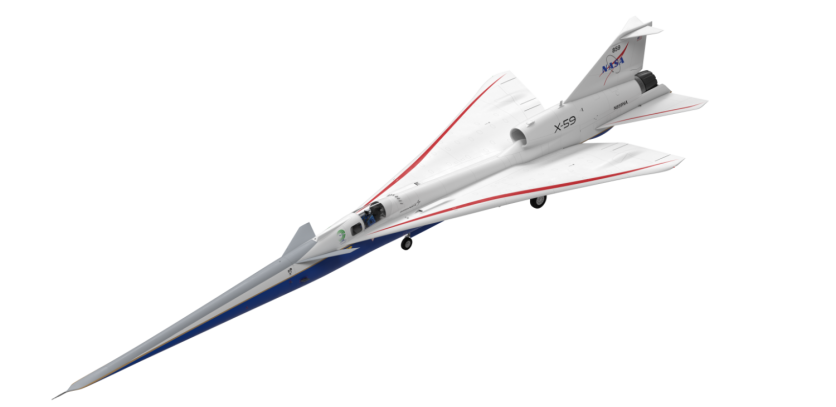NASA's X-59 quiet supersonic jet has entered the next phase of its development, adding a patriotic touch to its appearance as it moves to the paint barn at Lockheed Martin Skunk Works' facility in Palmdale, California.

Red, White, Sonic Blue
The X-59's distinctive paint scheme features a predominantly white body, a NASA "sonic blue" underside, and eye-catching red accents on the wings. Beyond cosmetic enhancement, the paint serves a functional purpose, providing protection against moisture and corrosion.
Additionally, it incorporates essential safety markings, aiding ground and flight operations, according to NASA.
This step was taken on November 14, which marks the aircraft's transition to the paint barn, where the final measurements of its weight and precise shape will be taken, contributing to improved computer modeling.
Cathy Bahm, the low boom flight demonstrator project manager, expressed excitement about this milestone, stating, "We are incredibly excited to reach this step in the mission. When the X-59 emerges from the paint barn with fresh paint and livery, I expect the moment to take my breath away because I'll see our vision coming to life."
"The year ahead will be a big one for the X-59, and it will be thrilling for the outside of the aircraft to finally match the spectacular mission ahead."
The X-59 stands as an experimental aircraft designed to achieve supersonic speeds while minimizing the typical sonic boom to a subtle sonic thump. Integral to NASA's Quesst mission, the X-59 will be flown over selected U.S. communities to collect data on public perceptions of its sound.
This data will be shared with regulators, potentially influencing current rules restricting commercial supersonic flight over land.
Read Also : New Computer Simulation Sheds Light on Early Galaxy Formation Aligned With NASA James Webb's Observations
X-59's First Flight
It is worth noting that the first flight of the X-59 as part of the Quesst mission was originally scheduled for 2023 but NASA has since announce that it will be adjusted to 2024.
This one-of-a-kind experimental aircraft involves intricate engineering, combining new technology with systems and components from various established aircraft. NASA explains that technical challenges encountered in 2023 entailed additional time for the integration of systems and resolution of intermittent issues with safety-redundant computers.
The X-59 incorporates landing gear from an F-16 and a life-support system adapted from an F-15, showcasing the complexity of its development. While the X-59 has made steady progress over the past year, the mission's top priorities remain safety and success.
The integrated testing phase, currently underway, must be completed before the flight readiness review. Once this stage is successfully cleared, NASA will release a more specific timeline for the first flight.
Quesst underscores NASA's dedication to an exhaustive review and testing process, ensuring the success of this pioneering mission with the potential to transform commercial aviation by decreasing travel time.
Related Article : NASA James Webb Achieves One of Its First Major Science Goals After Probing the Atmosphere of TRAPPIST Planet

ⓒ 2025 TECHTIMES.com All rights reserved. Do not reproduce without permission.




